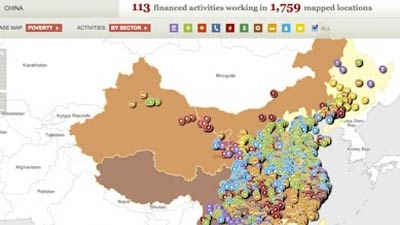Challenge
The basin of the Huang, Huai, and Hai rivers (3-H Basin), also called the North China Plain, is China’s most important agricultural region. Severe water shortages in the 3-H Basin threatened both rural income growth and food security and were exacerbated by high levels of water pollution and potential impact of climate change. Water demand in the region was high and growing while available water resources were already allocated and overexploited. Groundwater levels were dropping in many areas, sometimes by as much as one meter per year.
While WTO membership provided new opportunities for increasing farm incomes, the agricultural sector needed to undergo substantial structural change and modernization to take advantage of those opportunities. Agricultural practices needed to improve to produce safe, high quality and high value products which accounted for an increasingly larger share of the market. Water resources had to be used more efficiently, and agricultural pollution had to be curtailed.
Major challenges towards achieving these objectives included: the low efficiency and quality of agricultural production; low market value of farmers’ production; low efficiency of irrigation facilities; and weak irrigation management.
Moreover, the projected climate change is expected to have a negative impact on China’s irrigated agriculture, decreasing water stream flows and groundwater recharge in the 3-H Basin, while concurrently increasing irrigation water demand and withdrawals due to higher temperatures and higher evapo-transpiration (ET). Adaptation measures needed to be designed to address these impacts.
Approach
The IAIL3 project focused on raising productivity of land and water rather than on simply increasing production per se; and on enhancing market values and farmer incomes and their share of higher market values, rather than raising income solely through higher production. The project also added important innovations to modernize agriculture and enhance farmers’ competitive capacity.
Under the project, three specific groups of real water waving measures were adopted, including engineering measures such as canal lining, construction of low pressure pipelines and use of sprinkler irrigation and micro-irrigation; agronomic measures such as land leveling, deep plowing and use of crop residues to conserve moisture; and managerial measures such as reform of water management system and maintenance, promotion of self-managed irrigation areas through development of water users associations and provision of training in scientific irrigation system.
The Global Environment Facility (GEF) under the Special Climate Change Fund (SCCF) supported the development of a systematic adaptation-oriented approach building on climate change impact assessments, identification of appropriate adaptation measures, and the demonstration of adaption measure in selected sites for possible uptake by farmer groups.

